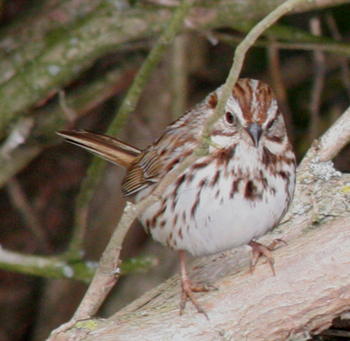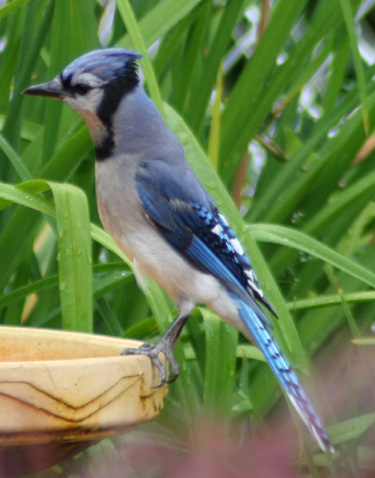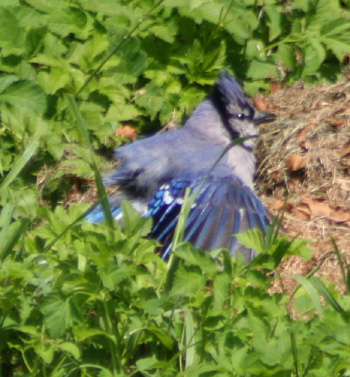Squirrel hunting
It is an enjoyable fall and winter sport. Where I live, squirrel hunting starts weeks before big game and ends in February – 2 ½ months after deer season ends. It can be as much fun as you want and it puts food on your table. If you want it will also put some money (very little) in your pocket. All you need is a good woodlot that is populated with trees that produce the food squirrels eat, a .22 caliber gun or shotgun and time. You can hunt alone, with the family dog or with a friend. A word of warning – never shoot into a squirrel nest. First – it is not sporting; second – you will probably never retrieve the squirrel and third – it is probably illegal. Always remember to be a responsible hunter.Gray squirrel

Squirrels are found where their food is. I live just outside the Adirondack Park in New York. Much of the forest is “forever wild”. What that means in a lot of areas it is mature forest without much food producing trees. Just hemlock and old pines and a ground covered in needle litter. What you find here is pine squirrels and frankly they are too small for me to bother with. I look for mixed forests with oaks, wild fruit trees, maples and pine. Here you will find gray squirrels, a fairly large squirrel that lives in much of the eastern United States. Forest that border farm land can be very productive.
As with most hunting, if you are alone, being a bit stealthy is important. If you go tramping through the woods crunching leaves or just being loud the squirrels (as well as everything else) will typically hunker down and quietly wait for you to pass. Try walking slow and steady. Every once and awhile, stop and stay in place. If you wait for 10 to 15 minutes the squirrels in the area will start moving again and at that point the “hunt is on”. I know people that will walk into a good woodlot sit for about 15 minutes and use a squirrel call with excellent results.
Shotgunning for squirrels is a blast. Many times they will be running along branches or bouncing through leaf litter looking for fallen nuts. At these times I consider shooting as exciting as gunning birds. When hunting with a shotgun, it does not need to be a specific gauge. Anything from a 12 to a 410 will work – you will need to use more powerful loads, magnums if your gun is capable, with the smaller gauges. My preference is an old 20 gauge I have owned for over 30 years. I typically use 3” shells loaded with 1 ¼ ounces of # 6 shot. Since I support eating what you shoot, try for head shots to keep the pellets out of the meat. The nice part of hunting with a shotgun is that you can be opportunistic. Rabbit and grouse seasons mirror squirrel season where I live and when you carry a shotgun you have the chance at a mixed bag.
For a challenge you can hunt with a 22 caliber rifle. I have an old single shot 22 with a variable scope mounted on it; it has taken many squirrels over the years. If the squirrel does not present itself safely, try calling to it or make a small movement. The squirrel should react, usually by moving and often into a tree crotch so it can take a better look. If it runs around to the other side of the tree take a rock or branch and throw it past the tree. That may cause the squirrel to scurry back to your side presenting a good shot.
squirrel target click for download
The only issue with a 22 is being very careful when taking your shot. Wait for the squirrel to present itself either on the ground or if in a tree where the tree will act as a backstop if you miss. A 22 can travel almost 1 mile and for several hundred yards it will keep enough power to hurt, even kill, unintended targets. When I was younger I took a cousin hunting. He had a 22 caliber marlin auto-loader. Within one day he had went through almost 500 rounds with one squirrel in his bag. Many of his shots were in the air at squirrels in trees without backstops. No matter how much I explained the danger he continued. He has never hunted with me after that day.
Hunting with a dog for squirrels can be productive. This is one time you do not need to be quiet. The dog will work the ground find and tree squirrels. Frankly, you really do not need a “trained” dog as you would for birds or rabbits. I think the main requirements are:
- A dog not afraid of a gunshot sound,
- A dog that will listen and not run,
- A dog that loves to chase squirrels
- A dog that will not grab a downed squirrel and ruin the meat.
I had a Cairn terrier that hated squirrels and would tree them and stand there barking, that is all I needed. Once treed the squirrels were more concerned with the dog then with me moving into place.
If you are squirrel hunting with a friend stay spread out to about 40 yards and avoid screaming back in forth. Slowly walk along and often a squirrel will be pushed out of hiding toward one of the hunters. This is much like hunting deer.
I like to use squirrel when tying certain flies for fishing or adding hair to the treble hooks of spoons and spinners. If you harvest enough squirrels and have no use for the fur or tails, you can try to sell them. You will need to know how to prepare the skins to keep any value. A good place to find buyers is your local trappers club. You can find a local club by going to the National Trappers Association website: http://www.nationaltrappers.com. They can direct you to buyers as well as provide information about skinning and caring for the hides.
Another place you can sell to is to Mepps Fishing Lure company. They will buy the tails but are strict about the condition the tail must be in. Check out their website: http://www.mepps.com/programs/squirrel-tail/. I have never sent them tails but might start. I am a big user of their product and it would be nice to someday think that a small piece of the lure I am using came from my hunting efforts.
 looked or misidentified when they are in winter plumage.
looked or misidentified when they are in winter plumage. is presumably due to their diet of seeds and when the food source is available. Because they breed late in the season they typically only raise one brood.
is presumably due to their diet of seeds and when the food source is available. Because they breed late in the season they typically only raise one brood.

 approximately 39 subspecies in North America and Mexico (Pyle 1997). It has a beautiful and distinctive song that is one of the most common bird calls you will hear in the summer. Like many other songbirds, the male Song Sparrow uses its song to attract mates as well as defend its territory.
approximately 39 subspecies in North America and Mexico (Pyle 1997). It has a beautiful and distinctive song that is one of the most common bird calls you will hear in the summer. Like many other songbirds, the male Song Sparrow uses its song to attract mates as well as defend its territory. head. The color changes to black, sky-blue and white barring on the wing primaries and the tail. The bird has an off-white underside, with a black collar around the neck and sides of the head and a white face.
head. The color changes to black, sky-blue and white barring on the wing primaries and the tail. The bird has an off-white underside, with a black collar around the neck and sides of the head and a white face. almost gull-like scream. There is also a high-pitched jayer-jayer call that increases in speed as the bird becomes more agitated. Blue Jays will use these calls to band together to drive a predator such as a hawk away from their nest.
almost gull-like scream. There is also a high-pitched jayer-jayer call that increases in speed as the bird becomes more agitated. Blue Jays will use these calls to band together to drive a predator such as a hawk away from their nest.


